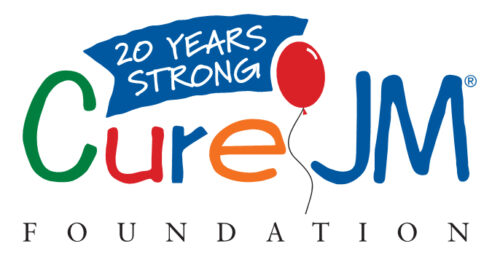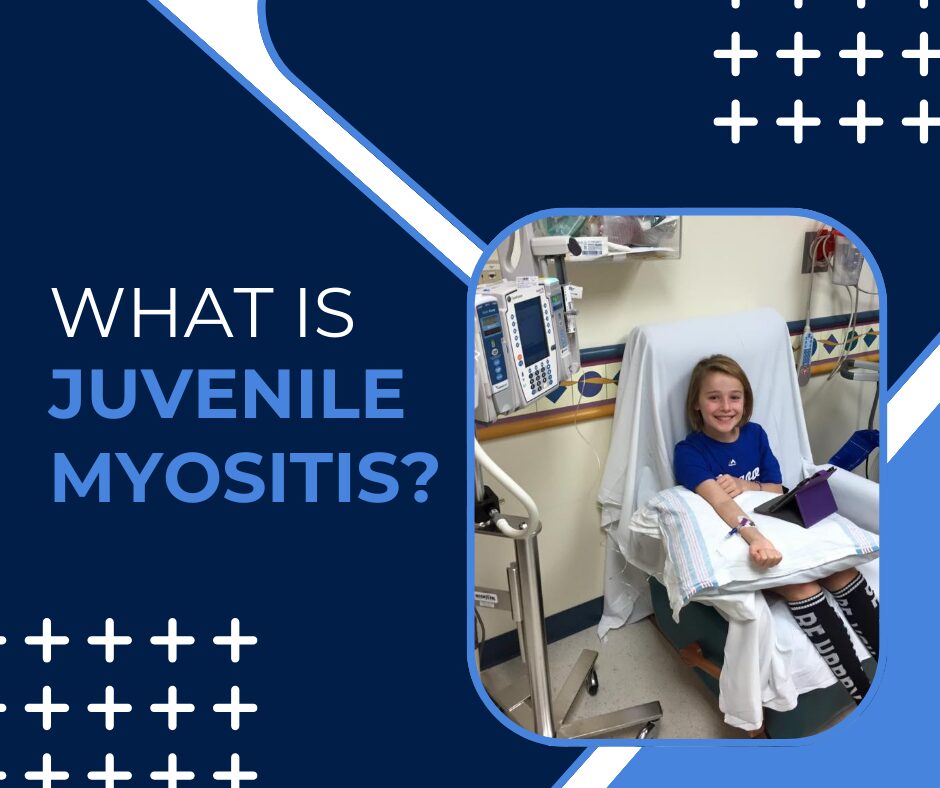Cinda McDonald, RDH, CCLS, M.Ed.
Cinda McDonald is a Certified Child Life Specialist working in the state of Texas. Cinda’s educational and professional background includes a bachelor’s degree in Psychology and Child Development, employment as a child life specialist at Texas Scottish Rite Hospital for Children for six years, and a master’s degree in Early Childhood Special Education.
At Texas Scottish Rite Hospital, Cinda worked with several children suffering from JM. Here are some of the most common questions parents have asked her of children with JM.
What Is a Child Life Specialist (CLS) and How Can One Help My Child?
A Child Life Specialist (CLS) is a non-medical person on the medical team. They hold a minimum of a bachelor’s degree in Child Life, Child Development, Psychology, Human and Family Studies or another closely related field. Before practicing as a child life specialist, they must complete an internship of a minimum of 480 hours under the supervision of a certified child life specialist. After completing an internship and holding the appropriate degree, the child life specialist can sit for the national certification examination provided by the Child Life Council.
The main role of a CLS is to help relieve children’s stress and anxiety when they become patients, whether in a doctor/dentist’s office, hospital, emergency room, hospice or any other setting in which children are served.
CLSs have an extensive educational background and training in child development that enables them to relate to and communicate with children on the appropriate developmental level. They often help the children they serve by preparing them for procedures, surgeries, or hospital stays; teaching them coping techniques and strategies; providing distraction techniques during procedures; and offering comfort and support before, during and after procedures.
During hospitalization, CLSs work to make the environment as comfortable as possible by offering play activities to help familiarize children with medical equipment and help them be kids. They can also work with the child’s siblings to help them better understand their brother or sister’s condition.
Upon request, many child life specialists also speak at schools to help explain the child’s medical condition to their classmates and teachers.
My Child Has Just Been Diagnosed With JM, and I Don’t Know Where To Begin or How To Explain This to Them. What Do I Do?
Your child knows something is going on and can feel that you are stressed, so it would be better to tell him sooner rather than later.
Children respond to this type of information differently than adults do. They may listen for a few minutes and then ask to play. But later, may come back and have more questions. They will likely repeat questions already asked several times, so be sure your answers are consistent. Encourage them to ask questions at doctor visits and for questions that you can’t answer, help them to write them down so that you can take them with you to the appointment.
Understanding JM is difficult for an adult, so try to provide only so much information so that your child is not overwhelmed. They will likely continue to ask more questions as they grow older. But it is also important to know that whatever age, they listen to you and the doctors talk. So be mindful of what you say and how you say it when he is near.
Try to maintain a positive attitude and keep your child’s life as normal as possible. Maintain routines, household responsibilities, school attendance, and extracurricular activities as much as possible to maintain a sense of structure for your child. Although it seems easier to let things slide or give in, children thrive on structure and routine to better understand their world and their role in it.
As a Follow-up, I Am So Overwhelmed and Can Hardly Talk About It Myself. Should I Have a Friend Do It? Would It Be Better To Wait and Explain in a Few Weeks When I Can Do It Without Crying?
If you do not feel that you can do that without becoming emotional, it would be beneficial for another trusted adult to explain. Child Life Specialists often help explain diagnoses to children through books, verbal explanations, drawings, videos, or medical play.
If you aren’t working with a child life specialist, you and the person who will do the explanation should talk with the doctor or nurse about the best terminology to use when explaining the diagnosis to your child. When explaining, be sure to emphasize what your child can and will be able to do in the future rather than what they cannot do.
Is It Better To Spring a Procedure on a Child or to Talk to Them About It Before?
You should never, ever spring a procedure on a child. Even though the procedure may be painful or scary, it is important to let them know what is happening, which helps them feel a little more in control.
If you spring it on the child, they will always look over their shoulder, waiting for it or something worse to happen again. They will lose trust in you and other people providing care to them, increasing their stress and anxiety. Just be sure not to tell them too far in advance because that increases anxiety, also.
We Are Going To Be in the Hospital for My Child To Get a Muscle Biopsy Soon. Do You Have Suggestions on How to Talk to Him About What Will Be Happening? He Has Never Been in the Hospital Before and Is Already Afraid.
Remember to be very positive when talking about the hospital and the muscle biopsy. Your child will look to you when deciding how scary it sounds.
Ask your doctor if you can meet with the Child Life Specialist before admission. The Child Life Specialist can work with you and your child a day or two before admission to prepare you for the hospital experience by taking you on a tour, showing you a video, or recommending books to read. They can also explain more about the surgical process.
If you don’t have access to a Child Life Specialist, you can find books about going to the hospital at your library, in a hospital Family Resource Center, or through an Internet search. While you can talk with your child about the reason for the hospital admission, you don’t need to offer too many details. Your child does not need to know about things that will take place while they take the special nap, and never say that they will be put to sleep because they won’t be awake to experience them.
You can explain that the doctor will take a little piece of the muscle so they can find out the best way to help you feel better. For the doctor to get the little piece of muscle, you must take a special nap. That will help the doctor work fast and get what they need; before you know it, it will be all over. You will probably feel sore when you wake up, but the nurses can give you medicine. You will be back to playing in no time.
My JM Child Will Be Getting Weekly Methotrexate Injections. She Is Terrified of Needles, and I Know It Will Be Very Hard on Us. Seeing Her Cry Will Surely Cause Me to Cry Too. Do You Have Any Suggestions or Tips?
While getting injections is never easy, there are things that you can do to help her get through it more easily. Most importantly, you must maintain a positive attitude when discussing the need for the
medication, and the actual injection.
Your child will respond like you, so if you act upset, she likely will also. If you do not feel you can support her during the injection without becoming emotional, it would be more beneficial for another trusted adult to be there with her.
Fear of needles is extremely common. Think about it, has anyone ever said that they love to get shots? But you or another trusted adult could use distraction techniques to help her through it. You know your child best, so depending on their age, you can do things like blow bubbles or a pinwheel, which helps to relax the muscles, count, sing, play ‘I SPY,’ look at a picture book, listen to music, watch cartoons, or even take an imaginary trip to Disney World.
Besides using distraction, it is important to give your child choices. Involving them in their treatment will help them feel like they have control over an out-of-control situation. Ask them if they want to help get the medicine out, wipe the area with the alcohol gauze, choose where they want the injection, watch as the injection is given, etc.
Try not to ‘warn’ your child that they will be getting the injection until a few minutes before it. Telling them too far in advance will only build unnecessary anxiety. Above all, be honest with them. If you try to sneak the injection or mislead them about what is happening, they will lose trust in you and others caring for them. If you must softly restrain them, talk to your Child Life Specialist or nurse about comfort positions that will allow you or another trusted adult to provide the necessary restraint but in a way that also provides comfort to the child.
If your child still cries, that is okay; you can tell them it is okay to cry. Crying is an appropriate coping mechanism for children and should be allowed because they are going through some scary stuff. However, if the crying doesn’t stop shortly after the injection is completed or seems to worsen with each injection, you may need to seek help from a psychologist, who can provide further recommendations to reduce the trauma they are experiencing.
What Are Some Ways To Prepare My Child for Getting Her IV Started?
IVs can be tough for kids, especially kids with JM. Sometimes it takes more than one or two tries before the IV goes into the vein. If you are working with a child life specialist, they can prepare your child for the IV start through medical play, which often includes showing your child the materials used for the IV start and perhaps even allowing them to put a pretend IV into a doll.
Even if you aren’t working with a child life specialist, you can help prepare your child for the IV start. Ask your nurse about using Emla, Elamax, or cold spray on the IV site. If your nurse uses one of these products, be sure to find out how it works so you can use that information to explain to your child. These products can make the IV start much more comfortable; however, they are not always appropriate for every child. Find out when the nurse plans to start the IV and begin to prepare your child no more than 10 minutes before the nurse arrives. Your child may become very stressed and anxious if you start too early.
Tell your child that the doctor has asked the nurse to put a tiny straw into the vein so that the medicine needed to help them feel better can get to all the areas of the body quickly. The straw is very tiny and soft and gets into the vein with a quick ‘stick’ or ‘poke.’ But the straw is the only part that stays in the vein, not the ‘poker.’ If your child wants to know if a needle is used to get the straw into the vein, be honest and say, “yes.” However, the needle is just used to get the straw in place and does not stay in the vein.
After the IV is in place, the nurse will attach a small tube to the straw and put some cool water into the tube to ensure the IV is working properly. Then the nurse will tape the straw down to stay in place. The medicine will go into the end of the tube after an even longer tube is attached to it.
It is important to never say, “you’re done” until after you are 100% sure the IV is in place and working properly. It is common for it to take multiple attempts to get it started in kids with JM. Again, allow your child to participate and make choices, help them with distractions, and offer comfort and support. IV starts are tough for everyone, but having lots of hugs can make it easier.





